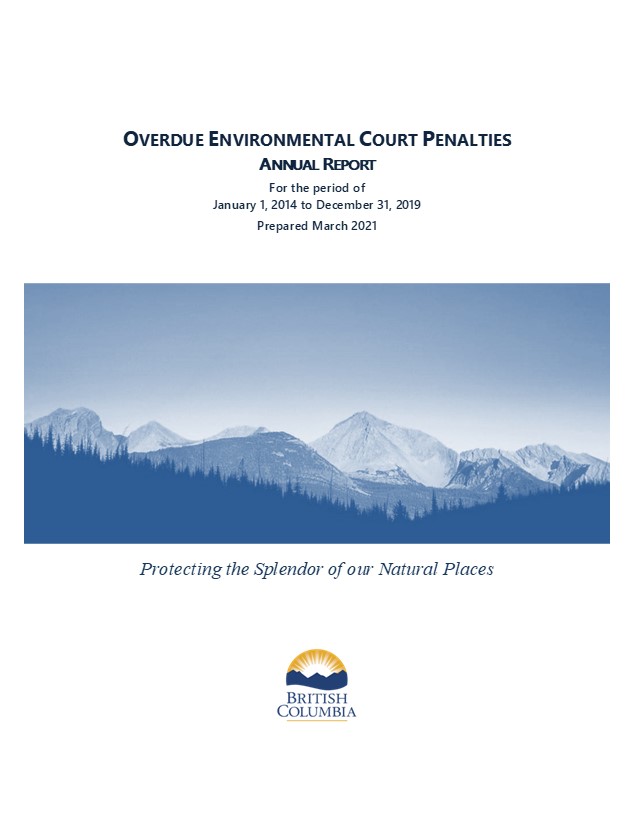Overdue Environmental Court Penalties
Effective mechanisms must be in place for collecting environmental court penalties if they are to have the intended effect of deterring harmful behaviours - especially those most harmful behaviours that are prosecuted through the courts.
In 2013, the Ministry of Environment and Climate Change Strategy conducted a review of the payment rate for environmental court fines and found that it had been as low as 40% in the preceding years. That same year, the ministry spearheaded a multi-agency, multi-pronged project called Closing the Gap, to increase the payment rate.
Working with partners in the Ministries of Finance, Attorney General, and Forests, Lands, Natural Resource Operations and Rural Development, increased focus was paid to debt collections, with liens on properties, seizures of bank accounts and referrals to the Canada Revenue Agency to garnish GST payments and income tax refunds. A number of hunting and angling licences were also cancelled for non-payment. Additionally, the Ministry of Environment and Climate Change Strategy employed its new strategy of producing an annual report of all the names of individuals and companies with overdue penalties. As identified in the Overdue Environmental Court Penalties Report (PDF, 566KB) the payment rate for the 2014 to 2019 period is now at 90%.
All businesses and individuals who have overdue environmental court penalties payable to the Province and the Habitat Conservation Trust Foundation (HCTF) are named. Authority to publish the names is provided by the Ministry of Environment Act.
The Overdue Environmental Court Penalties Report (PDF, 566KB) provides the names of businesses and individuals who have overdue environmental court penalties payable to the Province and HCTF.
Contact information
For questions regarding the Overdue Environmental Court Penalties Report
NRCED@gov.bc.ca

